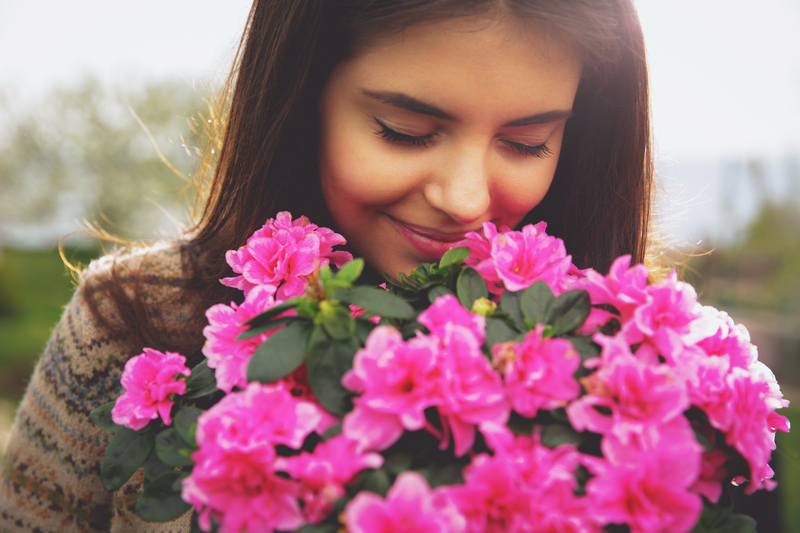Find 3 Simple Steps to Enhance the Longevity of Your Garden Blooms
Posted on 02/07/2025
Find 3 Simple Steps to Enhance the Longevity of Your Garden Blooms
Are you a garden enthusiast yearning for vibrant blossoms that last? There's nothing quite like the beauty and fragrance of flourishing blooms in your backyard. But often, gardeners struggle to keep their flowers looking fresh and lively for more than just a few weeks. Enhancing the longevity of your garden blooms doesn't have to be complicated. In this in-depth article, we'll reveal three simple steps you can follow to make your flowers stay vibrant and healthy for a long time. Whether you're a seasoned horticulturist or a gardening newbie, these practical tips will boost your garden's curb appeal and bring enduring joy to your outdoor haven.
Why Focus on the Longevity of Garden Flowers?
Your garden is a living masterpiece. Ensuring that your blooms last longer is crucial, not just for aesthetics but also for plant health, pollinator attraction, and even property value. Long-lasting garden blooms bring vibrancy, fragrances, and color to your life day after day. However, factors like climate, soil health, watering habits, and pruning schedules can hinder your efforts. By understanding and implementing a few straightforward strategies, you can unlock the secret to enduring blossoms in your garden beds.

Step 1: Optimize Your Garden's Soil Health
The foundation of magnificent, long-lasting garden flowers begins beneath the surface. Healthy, nutrient-rich soil provides blooms with the essential elements they need for sustained vitality and growth.
Test and Amend Your Soil Regularly
- Soil Testing: The first action to enhance the durability of your garden blooms is understanding your soil's composition. Use an affordable soil test kit from your local nursery or extension office. This will reveal pH levels, nutrient content, and possible contamination.
- Amend Accordingly: Based on your test results, add organic matter such as compost, worm castings, peat moss, or aged manure. These additions enrich soil texture, improve drainage, and provide sustained nutrients to your flowering plants.
- Mulch Your Flower Beds: Organic mulch helps regulate soil temperature, minimizes moisture loss, suppresses weeds, and gradually enriches soil as it decomposes. Use wood chips, shredded leaves, or straw as a low-cost yet effective solution.
Pro tip: Avoid synthetic chemicals whenever possible. Overusing fertilizers can cause fertilizer burn and harm the beneficial microorganisms, reducing the life of your flowers. Instead, opt for slow-release or organic alternatives to maintain a balanced environment for thriving, long-lasting blooms.
Step 2: Practice Proper Watering Techniques
Watering might seem straightforward, but it's the most common mistake gardeners make when striving to prolong the lifespan of their garden flowers. Both overwatering and underwatering can hasten the decline of your blossoms.
Establish a Consistent Watering Schedule
- Water Deeply, Not Frequently: Shallow, daily watering results in weak root systems. Instead, provide your blooms with 1-2 inches of water weekly in one or two deep sessions to encourage roots to delve deeper into the soil.
- Morning is Best: Always water early in the day. This gives plants time to absorb moisture before the afternoon sun, reducing the risk of fungal diseases and excessive evaporation.
- Avoid Wetting the Foliage: Direct the water toward the soil, not the leaves or petals, to prevent mold and mildew which can quickly ruin the appearance and health of your garden's vibrant blooms.
- Adapt to the Weather: Adjust your watering frequency during rainy spells or droughts. Monitor your soil's moisture by checking 2-3 inches below the surface - if it feels dry, it's time to water.
Efficient watering is paramount for lush, resilient flowers that dazzle across seasons. Consider installing soaker hoses or a drip irrigation system for the best results, as these deliver water straight to the root zone and conserve valuable resources.
Step 3: Pruning and Deadheading for Prolonged Blooms
One of the easiest steps to increase the longevity of your garden's blossoms is regular pruning and deadheading. Cutting away spent or faded flowers redirects the plant's energy into producing new buds, instead of going to seed.
Master the Art of Deadheading
- Remove Spent Blooms: As soon as flowers begin to wilt or fade, snip them off just above the nearest set of healthy leaves. Use clean, sharp scissors or pruners for a clean cut.
- Prune for Air Circulation: Cut back excess or crowded stems to improve airflow, which reduces disease and allows sunlight to reach all parts of your plant.
- Strategic Shaping: In early spring and late fall, give woody perennials or rose bushes a more substantial trim to promote vigorous future growth and abundant, lasting blooms.
- Know Your Species: Different flowers have different growth and bloom habits. Consult guides for your specific varieties to know when and how much to prune for optimal results.
Frequent deadheading extends the bloom period of popular garden flowers like marigolds, cosmos, petunias, and roses. This simple gardening habit keeps beds looking tidy, reduces disease potential, and maximizes flower power. Your garden will thank you with an extended parade of color and fragrance!
Bonus Tips to Extend the Life of Your Garden Blooms
Want to go above and beyond? Here are a few extra strategies to keep your flowers flourishing even longer:
- Choose Long-Blooming Varieties: When you're planning your garden, select plants known for lengthy bloom seasons such as zinnias, coneflowers, salvia, and coreopsis.
- Fertilize Mindfully: Use a balanced slow-release fertilizer in early spring and mid-season. Avoid high-nitrogen formulas which encourage leafy growth over blossoms.
- Guard Against Pests and Disease: Monitor your plants weekly for aphids, powdery mildew, or signs of stress. Treat early with organic methods like neem oil or insecticidal soap.
- Provide Support: Use stakes or cages for taller, top-heavy plants. This prevents breakage and ensures flowers remain upright and visible.
Maximize Bloom Longevity with Smart Plant Placement
The right location can make all the difference. Place sun-loving blooms where they'll receive 6+ hours of direct light daily. Install shade cloth or plant heat-sensitive varieties in partial shade to prevent overheating and premature wilting.
The Importance of Seasonal Care
Seasonal changes have a profound effect on the lasting beauty of your garden's flowers. Don't forget to:
- Prepare for Extremes: In hotter months, increase mulching and water slightly more often. In the fall, remove dead plant material to prevent disease and give perennials a trim before winter dormancy.
- Rotate and Refresh: Change up your annual plants each season. This practice, called crop rotation, minimizes pest buildup and rejuvenates soil for next year's bloomers.

Frequently Asked Questions on Prolonging Garden Blooms
- Q: How can I keep my cut flowers looking fresh longer?
A: Use clean vases with fresh water, remove any leaves below the waterline, and add a drop of bleach or flower food. Re-cut stems diagonally every 2-3 days and keep arrangements away from direct sunlight. - Q: Do all plants benefit from deadheading?
A: Most annuals and perennials do, but some (like bulbs or certain wildflowers) set seed after flowering and do not require deadheading. Always research your specific plants. - Q: Is organic mulch better for flower beds?
A: Yes, organic mulch improves soil quality and delivers nutrients as it decomposes, making it an ideal choice for long-lasting blossoms.
Conclusion: Enjoy Enduring Blooms in Your Garden
Enhancing the longevity of your garden blooms doesn't require advanced degrees or endless free time. By focusing on nourishing your soil, watering wisely, and pruning diligently, you'll witness your garden beds bursting with color for months on end. Take these three simple steps--maintain healthy soil, water effectively, and frequently deadhead and prune--and pair them with mindful seasonal practices for the ultimate win. Your reward will be vibrant, lasting floral displays that enchant all who visit your outdoor sanctuary.
Ready to make your garden blooms last? Start implementing these steps today, and you'll create a paradise of perennial color that stands the test of time. For more gardening insights and tips to extend the bloom period, stay tuned to our articles and let your garden become the envy of the neighborhood!
```Latest Posts
Understand What Your Birth Flower Says About You and Your Journey
Step-by-Step Care for Vibrant Hydrangeas
Tulip Trivia: 7 Facts That Will Surprise You







